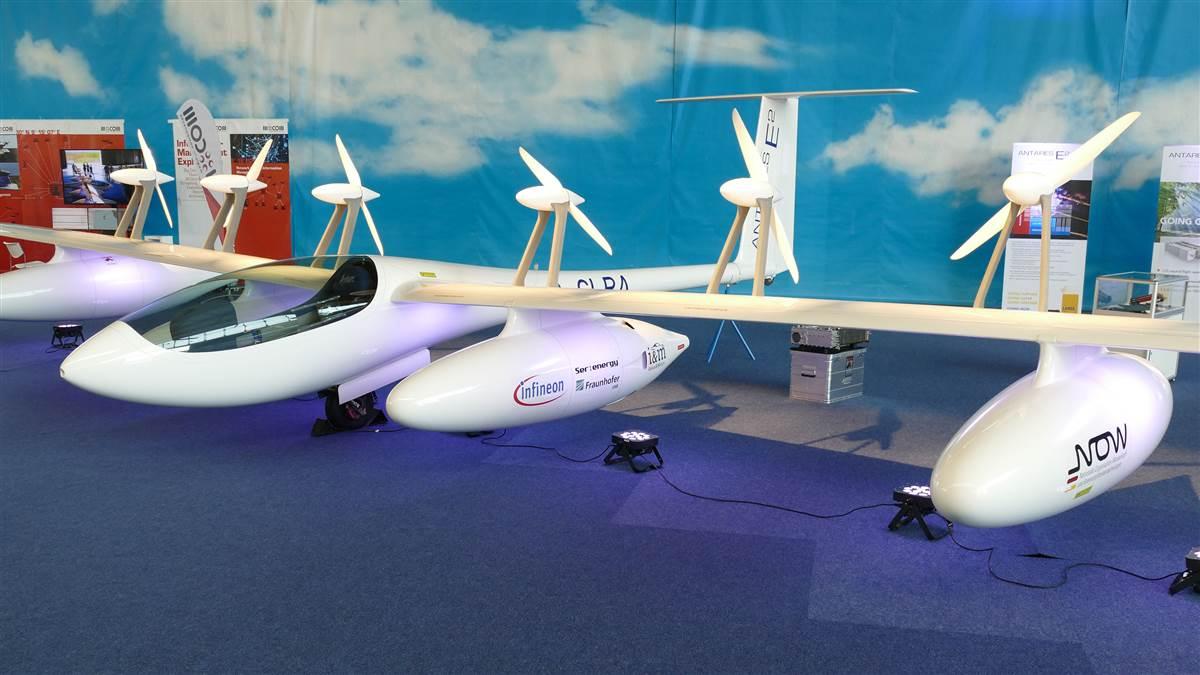Industry news: Electric power featured at AERO
Europe leading this growing aviation segment

Magnus Aircraft eFusion
This is a joint effort between Hungarian airframer Magnus Aircraft Corp. and Germany’s industrial giant Siemens, which provides its SSP-55D 75-horsepower electric motor. The eFusion’s lithium-ion battery can power the airplane for 40 minutes of flight and needs an hour to fully recharge. This Experimental, 110-knot, two-seat design—which made its first public flight at AERO—is but one offering on display. Another experimental Magnus design uses a hybrid propulsion system consisting of a 100-horsepower Siemens electric motor plus an 80-horsepower FlyEco diesel engine, which is based on the Mercedes-Benz Smart auto engine. It can cruise at 90 knots and, when using diesel power, can fly as far as 215 nautical miles on eight gallons of fuel. Currently, an eFusion is based at the Waco, Texas, airport, where it’s undergoing hot-weather testing. The +3/-3G eFusion is being touted as a low-cost trainer, but it’s not for sale—and like its hybrid cousin, it’s more of a testbed for Siemens to explore future iterations of a range of electrically powered aircraft, including four-seaters and more. For example, Siemens is testing one of its two-megawatt/2,600-horsepower electric motors on a BAe 146 regional airliner.
ONIX
This Czech-built motorglider (pronounced Phoenix) uses a 60-kilowatt/80-horsepower electric motor for self-launches as well as other phases of flight, and under power can cruise at 108 knots and fly for 2.5 hours on a single charge of its lithium-ion battery. Maximum glide ratio is 1:32. It can be ordered with wingspans of 11 or 15 meters. European LSA certification is expected by spring 2018. The company also offers charging units, one of which is capable of charging both the electric airplanes and electric cars. Hold your breath, because avionics-equipped airplanes will sell for 235,000 euros; the largest charging station will go for 48,000 euros.
Antares E2

The Antares E2 is not a true general aviation airplane, but its features are noteworthy. Built by Germany’s Lange Research GmbH, this six-motor design has a 75-foot wingspan, can cruise at 135 knots, and has a 40-hour endurance. Intended for use in surveillance roles, the E2 uses six methanol-powered fuel cells and dual batteries in a hybrid propulsion setup that generates enough power to provide ice protection of leading edges—and enough energy to drive radars and other high-end surveillance gear. It has a 3,638-pound maximum takeoff weight, can hold 660 pounds of methanol in two underwing pods, and carry a payload of 440 pounds. Manned and unmanned versions are being developed. The E2 on display was a mockup; first flight of the real airplane is set for June 2018. Government agencies are the target customers. It’s price is $2 million.
Pipistrel Alpha Electro
Pipistrel’s two-seat trainer is powered by a 60-kilowatt/80-horsepower electric motor and can fly for an hour on a single charge of its lithium-ion battery. Six airplanes have recently been exported to the United States. Four of these will serve as trainers under the CALSTART program for disadvantaged and unemployed youth at the Mendota and Reedley, California, airports, and the other two are owned by Tomorrow’s Aeronautical Museum in Los Angeles. Two simulators have also been shipped, with three more on the way, and eight more aircraft are on order.
According to Michael Coates, Pipistrel’s master distributor for the United States, these Alpha Electros have been signed off to legally fly, even though the FAA’s Light Sport aircraft (LSA) rules don’t yet endorse electrically powered flight. “Procedural changes to LSA rules allowing electrically powered aircraft have already been made internally by the FAA,” Coates said. “And now the new rules are on the way to being published.”
Coates says 50 percent of the cost of the CALSTART airplanes is being funded by pollution penalties paid to the California government by Volkswagen. The terms of a Volkswagen illegal-emissions settlement require that more than $1 billion be invested in a California “green fund” to benefit environmentally friendly projects. Price of the Alpha Electro is $118,000, which includes a charger. Six more are on the way to California customers. Elsewhere, some 20 Alpha Electros have been shipped worldwide, to customers in Australia, Canada, Switzerland, France, and the Benelux nations.
As for Pipistrel’s much-awaited line of Panthera four-seaters, an early 200-horsepower Lycoming IO-390-equipped airplane was on display. However, officials decided against pursuing an IO-390-powered Panthera when it was announced that the engine would never receive approval to run on auto fuel. Attention has now turned to a Panthera using a mogas-burning 260-horsepower Lycoming IO-540-V engine. First deliveries of this Panthera are anticipated in 2021, followed by a hybrid-electric variant scheduled to begin flight testing in 2020, and first deliveries in 2023.
Discopter Air Taxi
Of late, there has been much promotion of the vertical takeoff and landing (VTOL) urban shuttle concept. The Discopter, however, may raise doubts about rosy predictions. This massive, flying-saucer-like creation is made of a stack of massive circular aluminum tubing, topped by what look like open-air seats for five to nine passengers. Twin, 450-horsepower automotive engines will power a huge rotor beneath the seating area, enabling a claimed flying distance of up to 540 nautical miles at speeds of 110 to 135 knots. Just imagine—sitting in the breeze atop two 450-horsepower engines. It’s safer—and less noisy—than a helicopter, Discopter claims, and has “big lifting power” compared to other VTOL projects. It can be yours for $186,000, just as soon as there’s enough money to move the project ahead.
Email [email protected]



